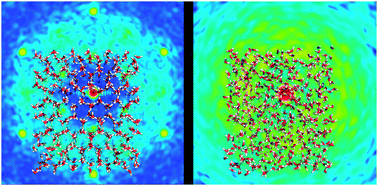Structural studies of melting on the picosecond time scale
Abstract
Ultrafast structural studies of laser-induced melting have demonstrated that the solid–liquid phase transition can take place on a picosecond time scale in a variety of materials. Experimental studies using ångström wavelength X-rays from the sub-picosecond pulse source at Stanford (now retired) on non-thermal melting of semi-conductors, such as indium antimonide, employed the decay of a single Bragg-peak to measure the time component of the phase transition. These materials were found to start melting within one picosecond after the laser pulse. Recent computer simulations have described the thermal melting of ice induced by an infrared laser pulse. Here it was shown that melting can happen within a few picoseconds, somewhat slower than non-thermal melting in semi-conductors. These computer simulations are compatible with


 Please wait while we load your content...
Please wait while we load your content...